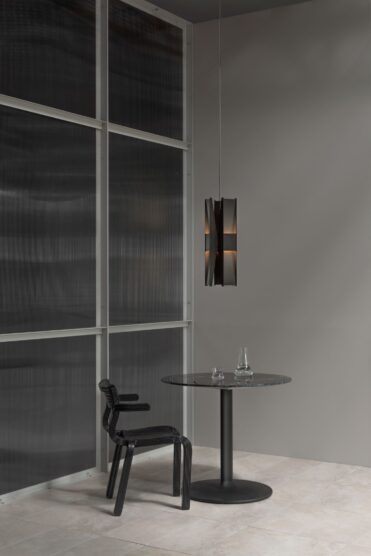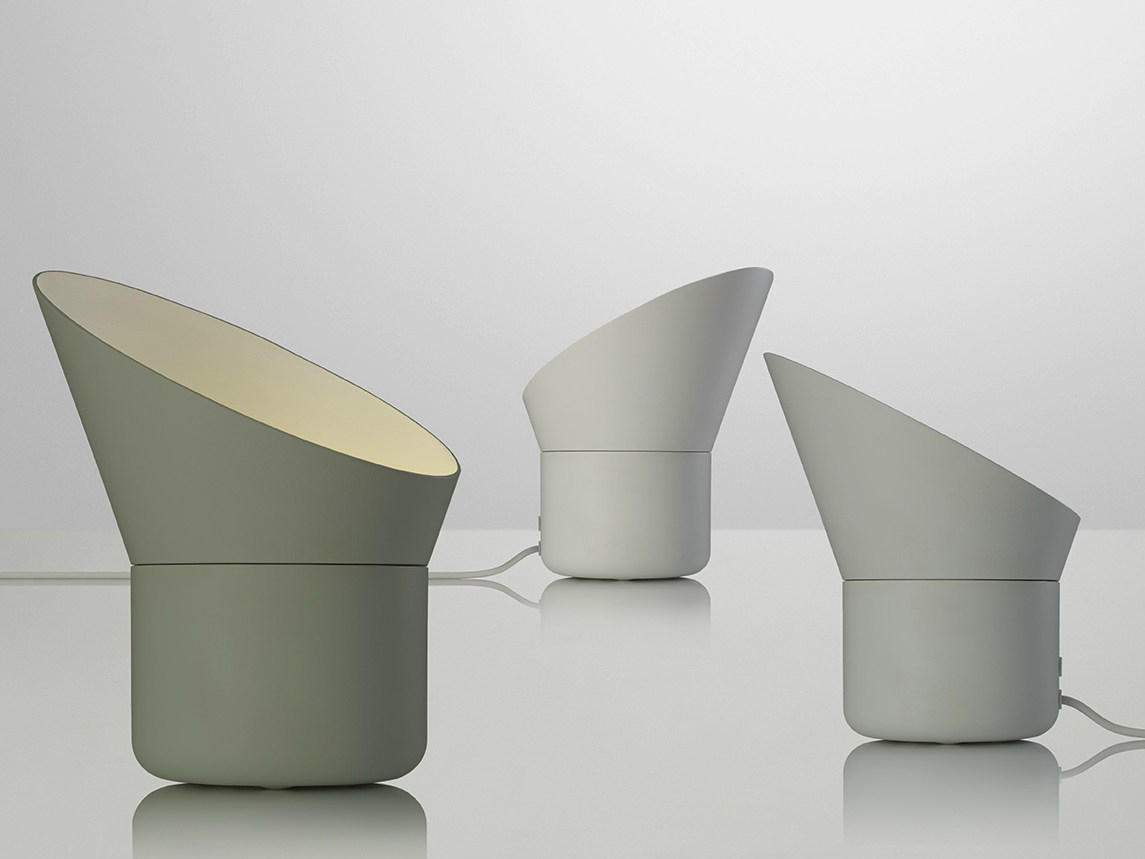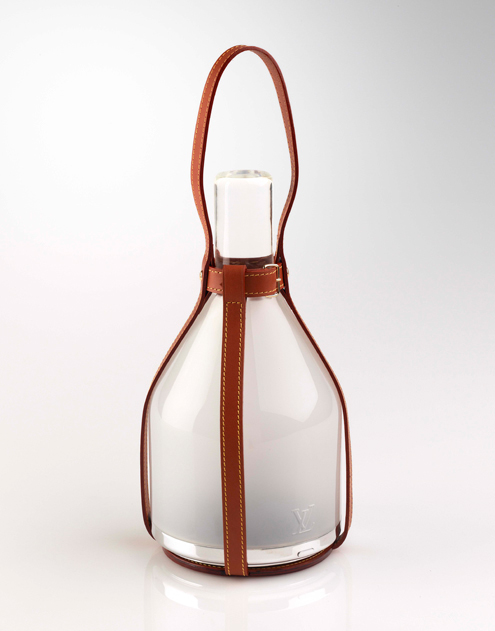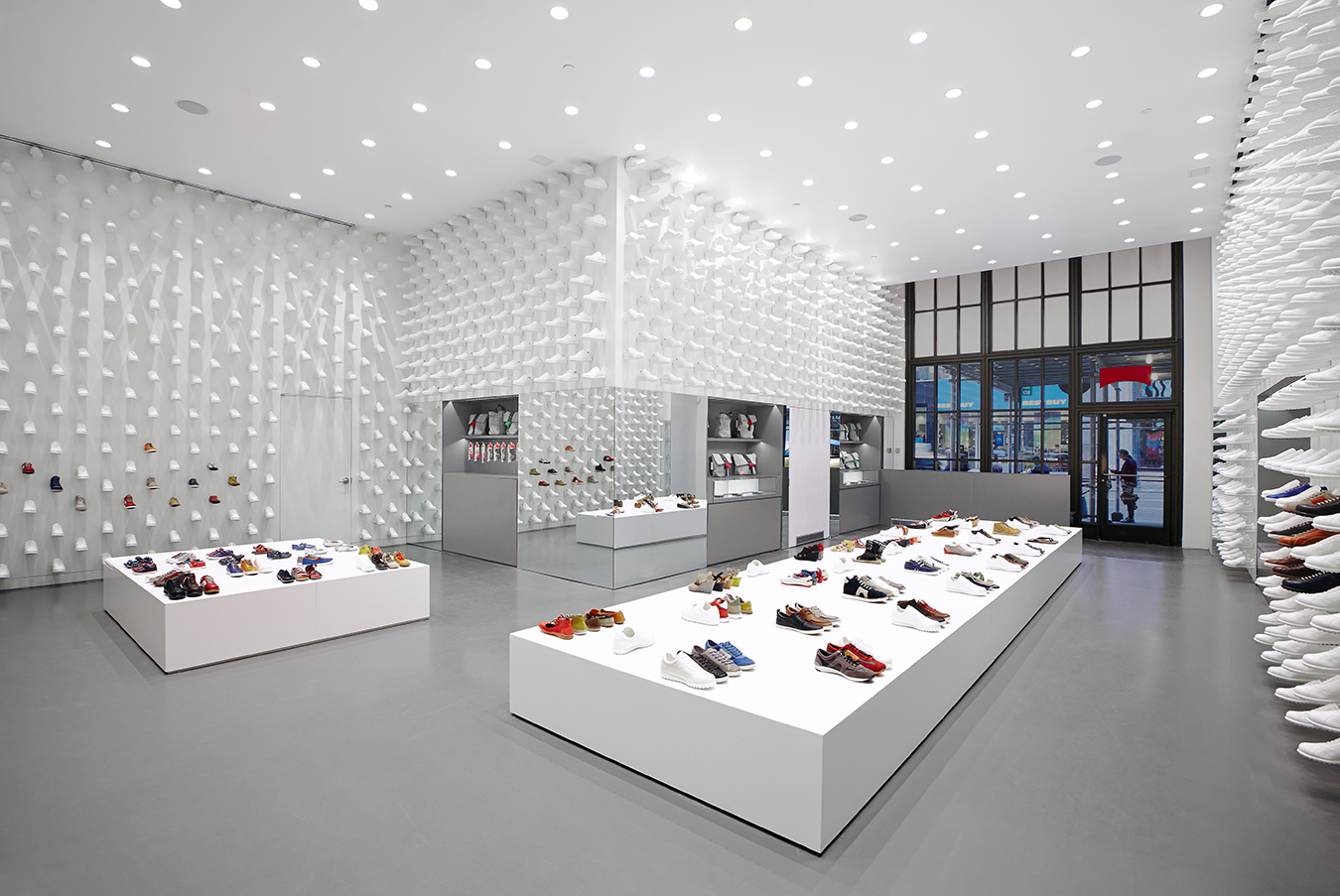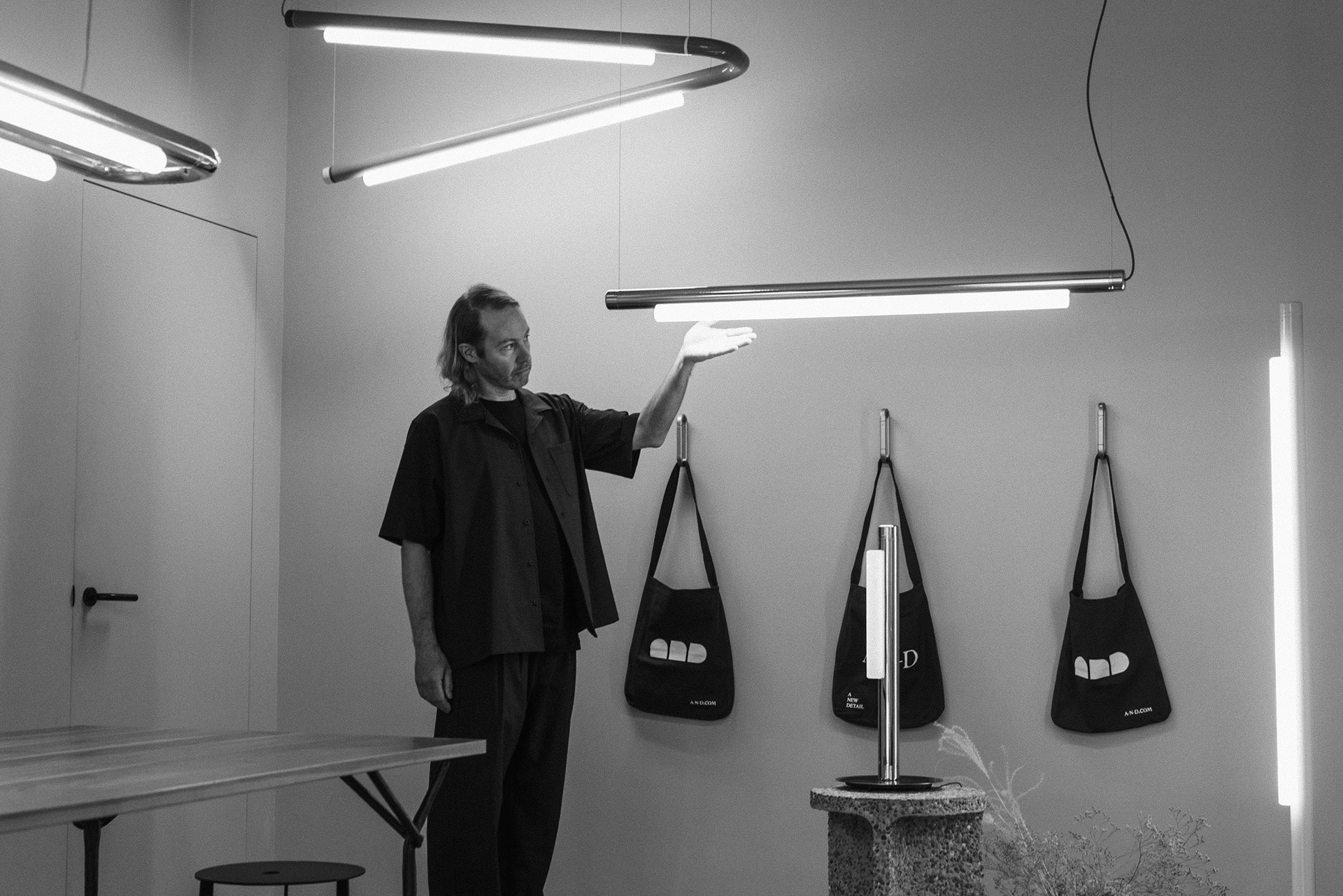
A-N-D Is Lighting the Way
Caine Heintzman, Lukas Peet, and Matt Davis bring unique contributions to their Vancouver-based lighting design studio.
For a stretch of well over 100 years, lighting designers and manufacturers used the same fundamental building block: the incandescent bulb. Light bulb technology improved in the decades after 1880, when Thomas Edison received his patent, and the forms and materials of the fixtures that held the bulbs changed alongside them, but the underlying principle stayed the same: incandescent bulbs illuminated the world.
That started to change in the early 2010s, when LEDs began to rewrite the rules of lighting design, kicking off a kind of reset moment in the lighting industry. It was in that context, in 2013, that three friends from the Vancouver design world—Caine Heintzman, Lukas Peet, and Matt Davis—decided to launch their own practice, a lighting design firm that would come to be called A-N-D (A New Detail). In many ways, the future of lighting design was up for grabs, with everyone trying to figure out how LED technology should look and function. And in the 11 years they have been working together, A-N-D has given direction to that future.

Boon Room Gallery showcase of A-N-D Lighting at Paris Design Week.
“We started at the trajectory of a new technology, when things were starting to get good,” Heintzman says. “A lot of the existing brands had to adapt their systems.” Not so for A-N-D: LED technology was its native language. Because it introduced new dimensions, lifespan, and character of light, the conventions of LED lighting had yet to be written. Peet says, “It wasn’t a light bulb, so it allowed us to take completely new approaches to lighting design.”
And they did. A spirit of creativity was plainly evident from their earliest efforts. With Button, a pendant Peet designed in 2012, an aluminum-backed LED panel hangs from the ceiling on a nylon rope, looking every part a button, just colossally sized. With Slab, Peet designed a pendant in the form of an LED panel partially enveloped with merino wool to help manage the acoustics of a room. And with Pipeline, a collection of lighting designed by Heintzman in 2013, a linear bulb is suspended by one-millimetre-thick aircraft wire, giving it the appearance of floating. Pipeline also introduced what would become part of A-N-D’s MO: customization through modularity. Like plumbing, which the fixture resembles, the units can be joined to create different configurations, allowing it to adapt to the scale and contours of a particular environment.
___
With a string of prestigious awards and a list of noteworthy collaborations under their belts, A-N-D has positioned itself at the vanguard of a relatively young lighting technology. Earlier this year, during Milan Design Week, the firm revealed new design work for Alcova, a platform that brings together the world’s foremost independent designers.
The exhibition venue presented a twist, though. Set in a 19th-century villa on sprawling grounds 40 kilometres north of Milan, the environment came with all the grandeur of an aristocrat’s country estate. But decades of deferred maintenance meant that chandeliers could not be reliably hung from the ceiling. For A-N-D, which typically launches lighting collections as pendants, this introduced something of a challenge. They could suspend a pendant and cross their fingers that it and part of the ceiling wouldn’t come crashing down, or they could design a freestanding installation from which to suspend a light. Instead, they came up with a novel solution that artfully responded to the context. They cast the Vale lighting as sculptural elements positioned on the floor. The original Vale collection, which A-N-D introduced in 2019, creates a soft, sculptural presence with its linear LED housed in a thin acrylic shell. In Milan, they reinterpreted it anew. As Heintzman puts it, “It’s essentially a giant chandelier on the floor.”

Lukas Peet in A-N-D’s East Vancouver design studio.
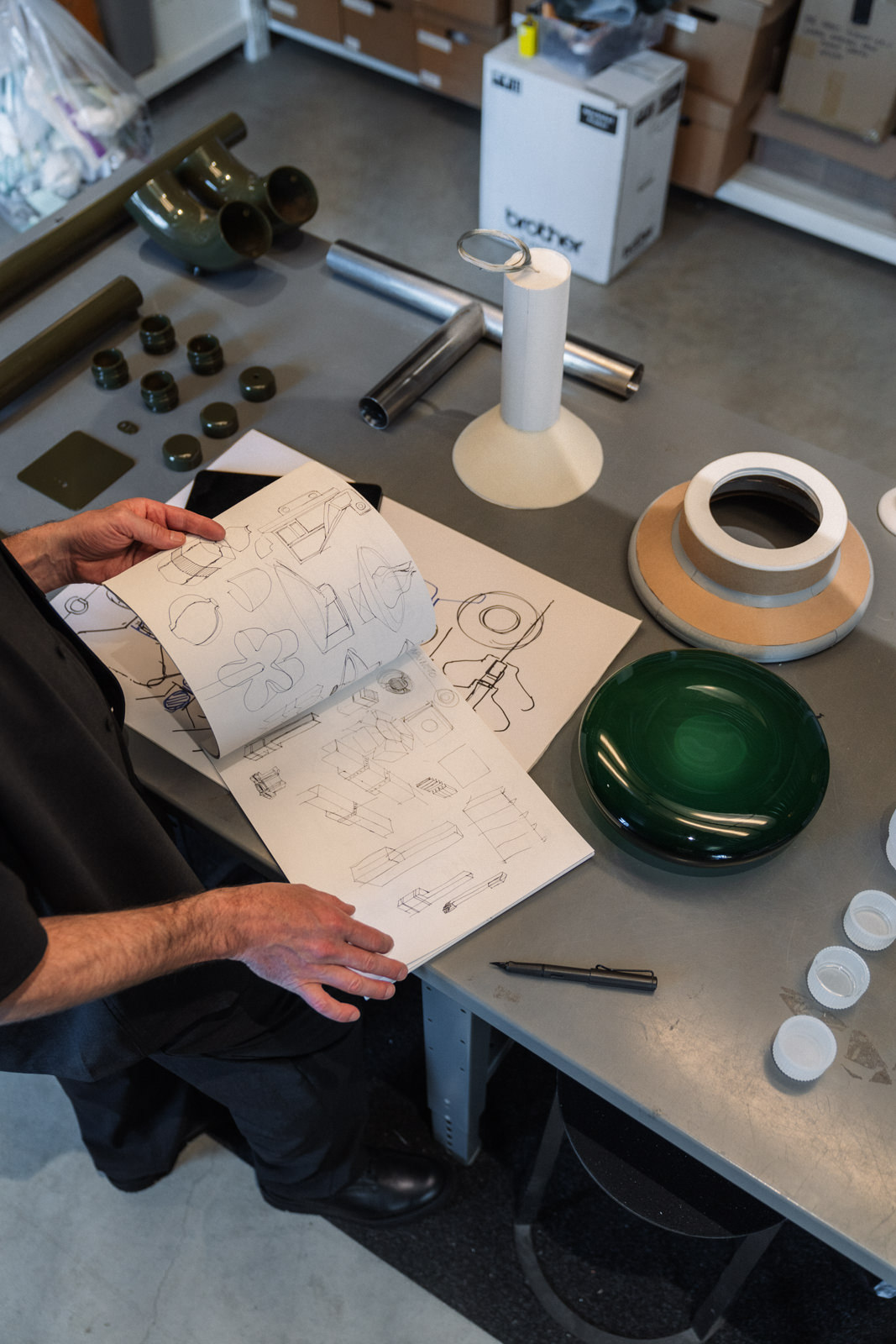
With Column (a pendant introduced in 2022), LED is housed in glass cylinders with faceted surfaces reminiscent of a Greek column but that work to diffuse the soft light carried within the glass. For Alcova, Peet exhibited Column as a floor lamp, making the likeness to the collection’s namesake even more direct. Arrayed at various heights, the presentation highlighted the collection’s modularity. “For our clients, having modularity and adaptability invites them to become more involved in the process, allowing them to tailor it to a room,” Peet says. “The outcome is better that way—it’s more collaborative.” This is expressed differently in each product. With Column, for example, individual elements can be stacked to different heights. And with the Vale chandelier, the number of component panels can be modified.
While the three partners are close collaborators, they stay in their own lane. Davis oversees the business side of A-N-D, while Heintzman and Peet each carry out their own portfolios of design work, meeting periodically to discuss designs. Although the collections come from different hands and emerge from different processes, they seamlessly cohere, as evidenced at Alcova, where two collections—one from Peet, the other from Heintzman—shared a single room.
For Peet, the process tends to start with a form or a material. “I come up with an initial inspiration, and then it goes through a lot of questions: How does it work? How does it function? How is it manufactured?” he says. “For me, a design is complete once all those questions are answered.” Whereas for Heintzman, the process tends to be less linear. “In general, inspiration comes to me during travel or walking through the city,” he says. “When I start my design, I don’t know what it’s going to look like at the end, but when that aha moment happens, you know there’s something to it.”
Each of their different backgrounds contributes to the symbiotic feel of A-N-D’s collection, something that can also be felt in the way the brand operates. Born in Vancouver and raised in Canmore, Alberta, Peet attended the prestigious Design Academy Eindhoven in the Netherlands, where he received training in product design and interiors. Heintzman, from Whistler, studied at Emily Carr University of Art + Design and the Weissensee Kunsthochschule in Berlin, specializing in industrial design. Davis, meanwhile, brought a long record of industry experience, having led the business side of design lighting outfits.
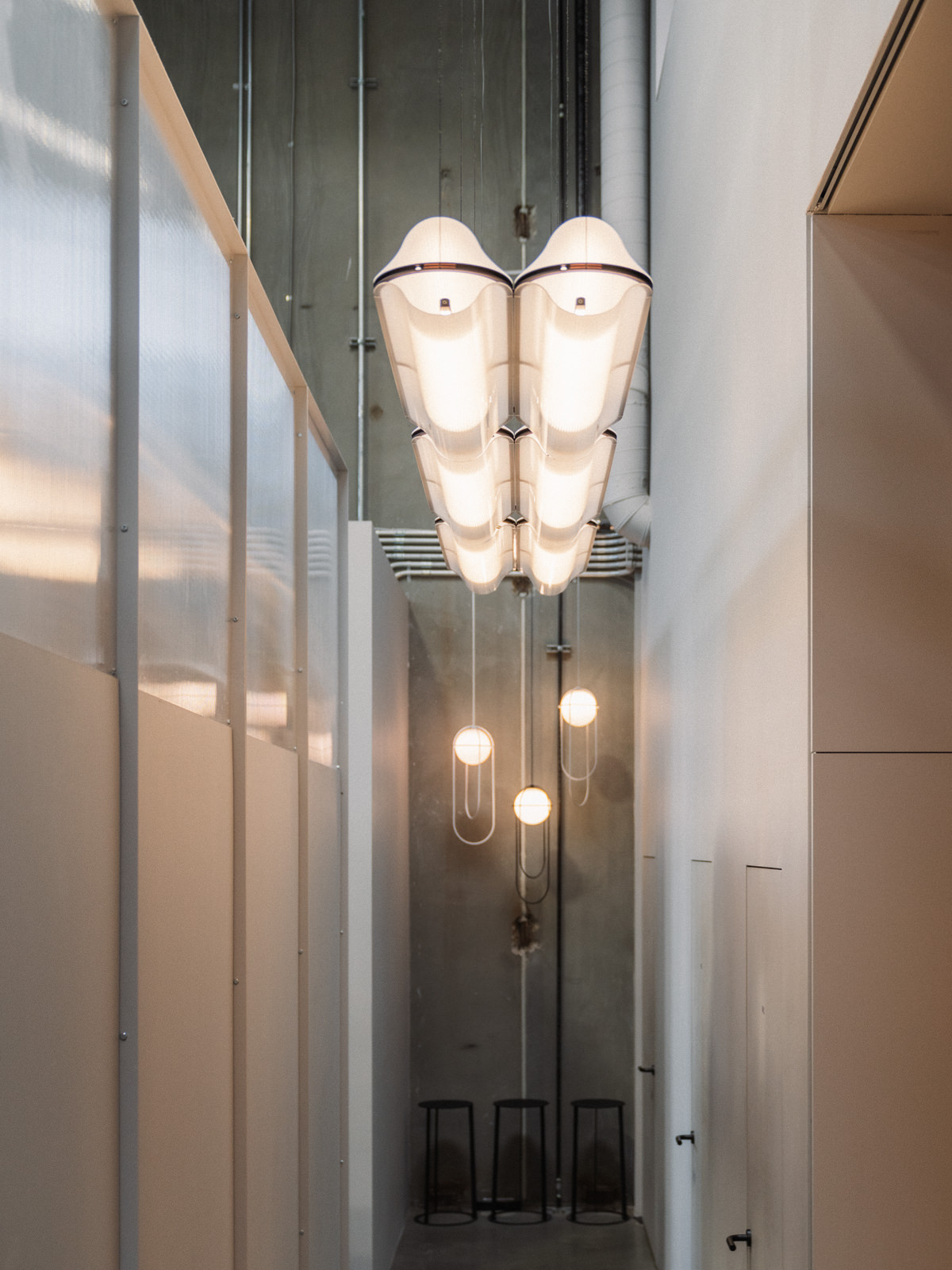
A-N-D Orbit pendants and Vale ceiling lights.
A-N-D takes a holistic approach to its design and business, keeping almost everything in house. The second storey of its studio, a former industrial space in East Vancouver that A-N-D designed on its own, includes the standard implements and setup of a design firm: tables, modelling workshops, offices. But that’s just one of its two floors. The first floor also includes areas for manufacturing, logistics, warehousing, and shipping, as well as a public-facing showroom and presentation space.
A-N-D’s approach gives it the opportunity to consider not just the form of a design but also the intricacies of how it gets built, setting up a creative feedback loop between design and manufacturing. “I think a lot of people who do design work come up with an idea and then send it off,” Heintzman says. Peet agrees, saying, “Both practices—design and manufacturing—influence the other. I make design choices based on costs and practical consideration.”
Having a direct hand in manufacturing allows the team to consider sustainability in a more deliberate way. Many lighting designers working with LEDs integrate the lights into the hardware, so the entire object becomes obsolete after it burns out. Yes, LEDs last longer than their incandescent counterparts, but that trend introduced a shelf life to lighting that increased waste.

Caine Heintzman, along with A-N-D partners Lukas Peet and Matt Davis, takes a holistic approach to business, considering not just the form of a design but also the intricacies of how things get built.
Not so for A-N-D. One of the core principles of the practice is its commitment to sustainability—including its focus on the long-term usefulness of its products. Across its entire portfolio, LEDs can be replaced, extending the lifespan of the fixtures. “All the parts we put into our lights can be serviced or replaced,” Peet says. “We want our products to function for at least 20 or 30 years.”
From its early days as a three-person partnership pulling late-night hours after other full-time design jobs, A-N-D has grown to a team of over 30 employees. By keeping all the operations under one roof, the studio allows the full team to understand all facets of the company: how design decisions implicate manufacturing, say, or how manufacturing affects shipping. And rather than outsourcing professional services like graphic design, branding, and packaging, A-N-D carries those out internally, too. “Doing it ourselves allows us to understand the brand,” Peet says. “Doing the imagery, the graphic design, helps us understand the brand.”
As Heintzman explains, “We started the practice with the three of us more or less moonlighting and doing everything ourselves: building products and figuring out how to source vendors.” That same spirit continues to define the practice—but rather than the three founders figuring things out in a tight, rented studio, they now do it from a space owned and designed by them.
From their studio in East Vancouver, the team has become a voice in the global design world. Heintzman and Peet are regulars at design fairs, citing A-N-D’s presence in Milan, New York, and Copenhagen. “We are fortunate to be able to travel quite a lot,” Peet says. But Vancouver continues to inspire. “Coming back to Vancouver is a focused space. It’s an author’s model: someone who goes out to experience things, but then who goes back to a beautiful place to do the work.”

